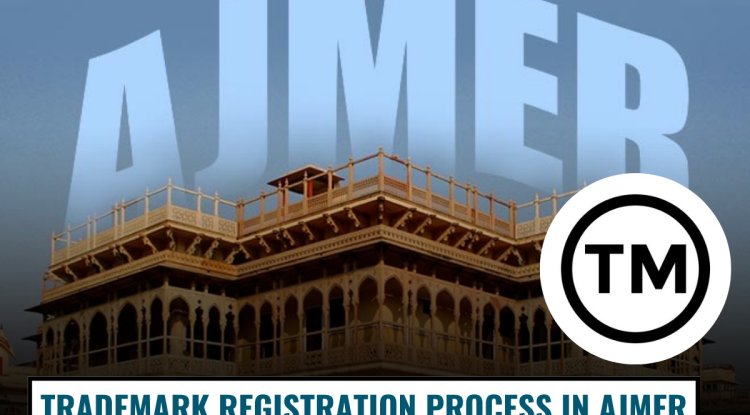Does an Apprehension of Trademark Infringement Constitute a Cause of Action Under the Trademark Law?
This article investigates the idea of apprehension of trademark infringement as a legitimate cause of action under trademark law. It defines the essential elements of trademark law, such as ownership and probability of confusion, and discusses how a trademark owner might seek legal redress even before any infringement happens. Key legal instruments, such as declaratory judgements and injunctions, are described alongside relevant case law supporting apprehension allegations. The article emphasises the significance of proactive trademark management for firms, which includes registration, cease-and-desist letters, and negotiation tactics.

INTRODUCTION
The Trade Marks Act of 1999 and the regulations enacted under it govern trademark laws in India. The Act establishes the procedures for registering, protecting, and maintaining trademarks in India. Trademarks are essential for establishing a company's identity and serving as a distinguishing feature of the products or services it offers.
Trademark infringement is defined as a violation of the trademark owner's exclusive rights. Infringement of a trademark is a serious offence under Indian law. It is defined as the illegal use of a registered trademark by another person or company in a way that is likely to mislead or confuse consumers. Recently, there has been growing worry about the possibility of trademark infringement and whether it may be pursued legally under Indian trademark law.
Quia timet action is a Latin expression meaning, ‘because he fears’. It brings us to the concept of a plaintiff seeking an injunction in a court of law because he believes the defendant will harm him or violate his rights in the future. As a result, in such cases, the court decides whether or not the plaintiff has a cause of action before granting injunctive relief.
An injunction does not need trademark infringement.
CAUSE OF ACTION
Section 29 of the Trademark Act, 1999 provides that “a registered trademark is infringed by a person who, not being a registered proprietor or a person using by way of permitted use, uses in the course of trade, a mark which is identical with, or deceptively similar to, the trademark concerning goods or services in respect of which the trademark is registered and in such manner as to render the use of the mark likely to be taken as being used as a trademark.”
A group of facts that give rise to a legal claim is known as a cause of action. This provision also cites 'likely of confusion' as a foundation for trademark infringement, broadening the scope for action based on suspicion of future violation. Thus, even if the defendant has not utilised the trademark and there is only anticipation of infringement, a cause of action may arise.
Thus, Apprehension becomes a cause of action
Trademark Infringement in India: Civil and Criminal Remedies
Indian trademark law offers both civil and criminal remedies to address trademark infringement. Civil remedies typically involve initiating a lawsuit for trademark infringement, while criminal remedies involve filing complaints with law enforcement or magistrates. To succeed in a trademark infringement case, a plaintiff must show that the defendant has used a mark that is identical or confusingly similar to their registered trademark. Furthermore, it must be proven that this use has resulted in public confusion or has the potential to do so.
A key element in establishing a cause of action is demonstrating that the plaintiff has suffered harm due to the defendant’s actions. This harm can take various forms, such as loss of goodwill, decreased earnings, or damage to reputation. A significant question arises regarding whether mere suspicion of infringement can form a valid cause of action under Indian law.
The Delhi High Court’s ruling in Intel Corporation v. Harpreet Singh & Ors. shed light on this matter. The court posited that it is unreasonable to expect an injured party to wait for actual infringement to occur when there is a credible fear of it. The court famously stated, “A stitch in time always saves nine,” underscoring the importance of taking preventive action. Thus, it established that a cause of action can emerge from a genuine apprehension of infringement, provided that the apprehension is substantial and indicates a real threat of future infringement. Similarly, In the case of Cadila Healthcare Limited v. Uniza Healthcare LLP and Anr., the Delhi High Court addressed a situation where a lawsuit was filed based solely on the existence of a website advertising a product with a mark similar to that of the plaintiff. The court acknowledged the validity of the cause of action, noting that Delhi is a major market for healthcare products. Consequently, it was reasonable to assume that any manufacturer of healthcare products would aim to sell and reach customers in Delhi.
It is clear from the discussion that a lawsuit may be initiated based on the mere possibility of trademark infringement. However, whether this mere apprehension is sufficient to grant the court jurisdiction remains uncertain.
In trademark infringement cases, a plaintiff can file a lawsuit either under Section 134 of the Trademark Act or Section 20 of the Code of Civil Procedure (CPC). Section 134 allows the plaintiff to bring the case in the location where they reside or conduct business, while Section 20 grants jurisdiction where the cause of action arises. Therefore, to establish jurisdiction, the apprehension of infringement must be recognized as a cause of action under Section 20 of the CPC.
In the case Allied Blenders & Distillers Pvt. Ltd. v. Prag Distillery Pvt. Ltd. & Anr., where the plaintiff filed a quia timet (preventive) action, the Delhi High Court observed that if there is a credible risk that the defendant might infringe the trademark within the court's jurisdiction, it would form part of the cause of action, thereby granting jurisdiction under Section 20 of the CPC. Similarly, in Pfizer Products, Inc. v. Rajesh Chopra, the court ruled that the mere threat of selling infringing goods in Delhi was enough to give Delhi courts the jurisdiction to entertain a suit, regardless of whether the threat itself was later proven valid.
In earlier cases, the Delhi High Court focused exclusively on the apprehension of infringement without considering the seriousness of the threat. Over time, however, the court's perspective shifted, and it began to take into account the degree of the perceived threat when determining jurisdiction. The rationale was that without a substantial threat, there is no cause of action.
In Shree Nath Heritage Liquor Pvt. Ltd. & Anr. v. Octaga Green Power & Sugar Co., neither the plaintiff nor the defendant had any business ties within the territorial jurisdiction of the Delhi High Court. The plaintiff argued that mere apprehension was sufficient to establish a cause of action under Section 20 of the CPC, thereby conferring jurisdiction. The court, however, disagreed, ruling that apprehension alone does not suffice. The threat must be significant and imminent. Likewise, in Impresario Entertainment & Hospitality Pvt. Ltd. v. S & D Hospitality, the court ruled that the mere accessibility of a defendant’s website in the forum state does not grant jurisdiction without other substantive ties.
This interpretation makes it clear that territorial jurisdiction in cases of trademark infringement based on apprehension is only conferred when there is a significant and immediate threat of future infringement. Such considerations do not apply when the case is filed under Section 134 of the Trademark Act, 1999.
LEVEL OF APPREHENSION
While an apprehension of infringement can constitute a cause of action under Indian trademark law, the level of apprehension required has not been clearly defined. Indian courts have not yet developed a systematic approach for assessing the criteria for proving an imminent threat of infringement. Factors such as inquiries about trademarks or interactive websites are sometimes seen as signs of potential infringement, but they do not definitively prove that infringement will occur. Courts may need to consider several factors when assessing the threat, including:
- The actions taken by the plaintiff to prevent infringement, following the principle of "caveat venditor" (let the seller beware).
- The attitude or behavior of the defendant, which could indicate whether they are likely to infringe in the future.
- The time lapse between the perceived threat and the plaintiff's request for legal relief.
These considerations could help in formulating clear standards for determining the presence of an imminent threat, as mere indicators like advertising or regulatory approvals may not be enough to establish such a threat.
CONCLUSION
It is not always necessary to demonstrate actual trademark infringement to initiate legal proceedings—apprehension of infringement, if substantiated, may be sufficient. However, the precise level of apprehension required has not been thoroughly outlined. Courts have yet to establish clear guidelines to define what constitutes proof of imminent danger in trademark cases. Simple indicators like regulatory approvals or claims of clinical trials may not be adequate. Given the growing importance of online marketing and sales, there is an urgent need to address gaps in the application of the quia timet principle to current realities. The author suggests that courts should adopt clear criteria to determine the level of apprehension required for quia timet actions, as determining a defendant’s intent to infringe is often challenging.












